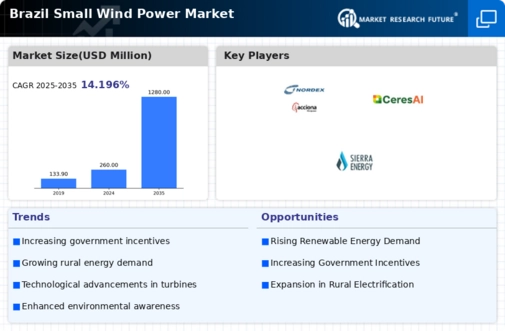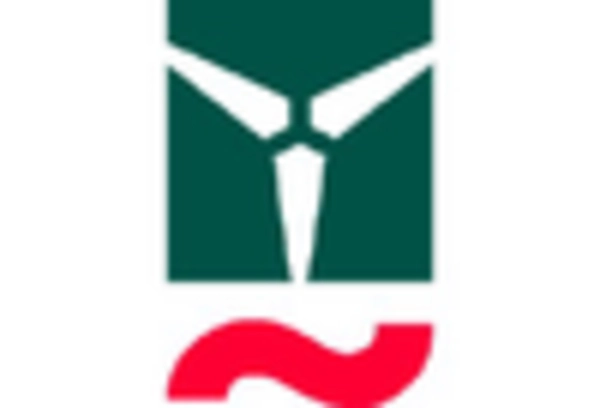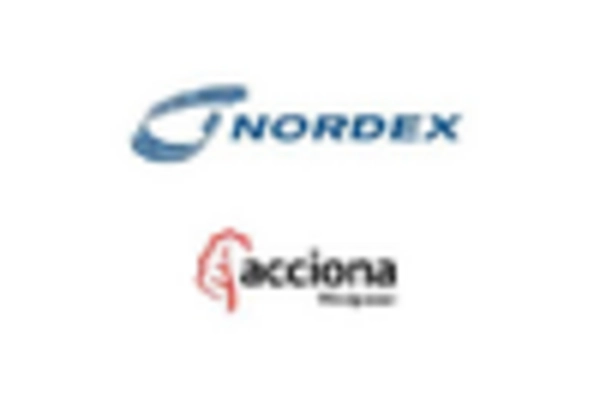The small wind-power market in Brazil is characterized by a dynamic competitive landscape, driven by increasing demand for renewable energy solutions and supportive government policies. Key players such as Siemens Gamesa (ES), GE Renewable Energy (US), and Vestas Wind Systems (DK) are actively shaping the market through strategic initiatives focused on innovation and regional expansion. Siemens Gamesa (ES) emphasizes technological advancements in turbine efficiency, while GE Renewable Energy (US) is enhancing its portfolio through digital transformation and smart grid integration. Vestas Wind Systems (DK) is also pursuing aggressive growth strategies, including partnerships aimed at expanding its footprint in emerging markets, which collectively intensify competition and foster innovation within the sector.
The business tactics employed by these companies reflect a commitment to localizing manufacturing and optimizing supply chains to enhance operational efficiency. The market structure appears moderately fragmented, with several players vying for market share, yet the influence of major companies remains substantial. This competitive environment encourages collaboration and innovation, as firms seek to differentiate themselves through unique value propositions and technological advancements.
In October 2025, Siemens Gamesa (ES) announced a partnership with a Brazilian energy firm to develop a new line of small wind turbines tailored for local conditions. This strategic move is likely to enhance their market presence and address specific regional needs, thereby solidifying their competitive edge. Similarly, in September 2025, GE Renewable Energy (US) launched a new digital platform aimed at optimizing wind farm operations, which could significantly improve efficiency and reduce operational costs for clients, positioning the company as a leader in technological innovation.
Moreover, in August 2025, Vestas Wind Systems (DK) secured a contract to supply small wind turbines for a community-based project in Brazil, reflecting its commitment to sustainable energy solutions. This initiative not only reinforces Vestas's reputation for reliability but also aligns with the growing trend towards community engagement in renewable energy projects, potentially enhancing customer loyalty and brand strength.
As of November 2025, current competitive trends in the small wind-power market include a pronounced focus on digitalization, sustainability, and the integration of artificial intelligence in operational processes. Strategic alliances are increasingly shaping the landscape, as companies recognize the value of collaboration in driving innovation and expanding market reach. Looking ahead, competitive differentiation is expected to evolve, with a shift from traditional price-based competition towards a greater emphasis on technological innovation, supply chain reliability, and sustainable practices, which will likely define the future trajectory of the market.

















Leave a Comment